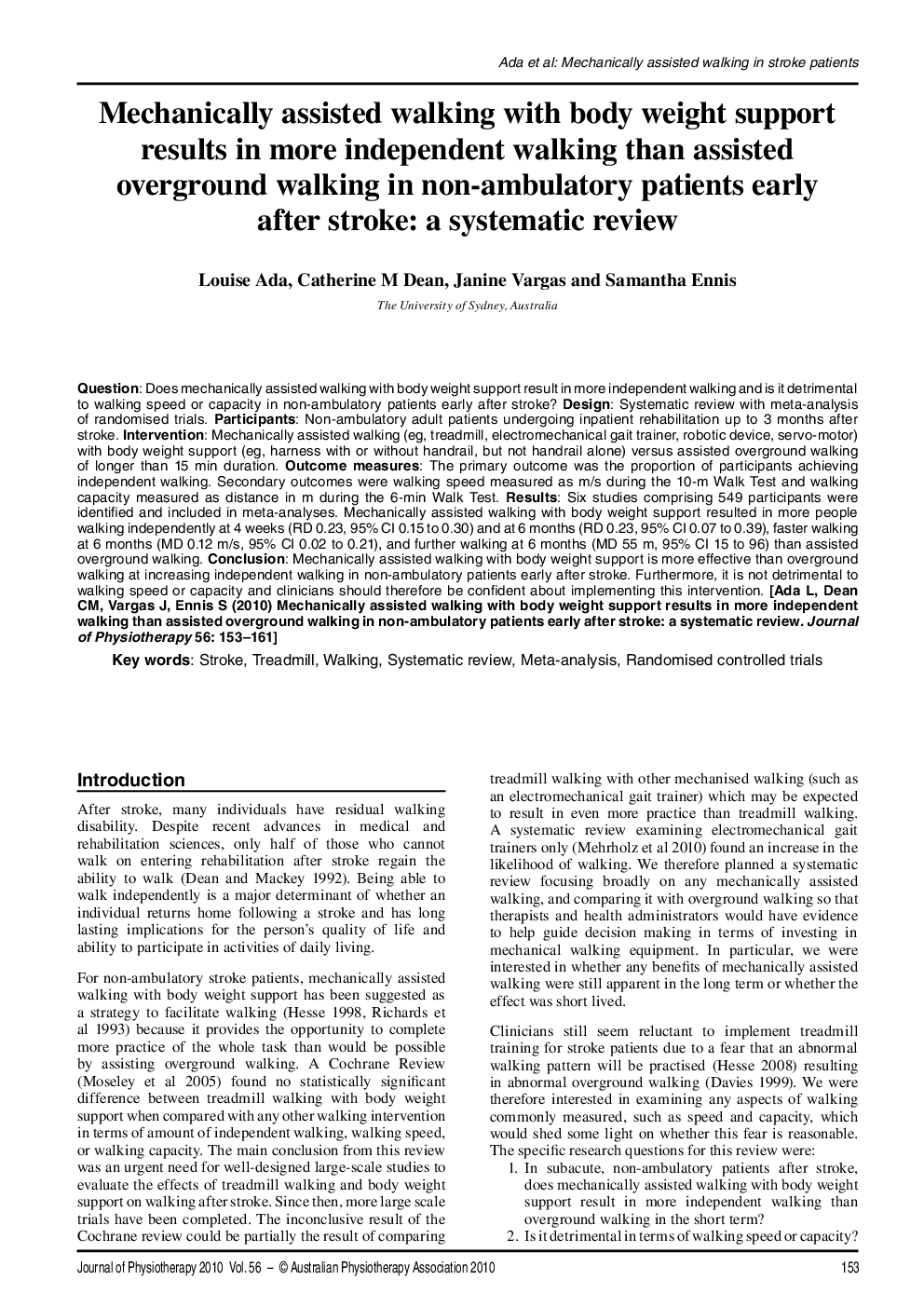| کد مقاله | کد نشریه | سال انتشار | مقاله انگلیسی | نسخه تمام متن |
|---|---|---|---|---|
| 2621995 | 1135797 | 2010 | 9 صفحه PDF | دانلود رایگان |

QuestionDoes mechanically assisted walking with body weight support result in more independent walking and is it detrimental to walking speed or capacity in non-ambulatory patients early after stroke?DesignSystematic review with meta-analysis of randomised trials.ParticipantsNon-ambulatory adult patients undergoing inpatient rehabilitation up to 3 months after stroke.InterventionMechanically assisted walking (eg, treadmill, electromechanical gait trainer, robotic device, servo-motor) with body weight support (eg, harness with or without handrail, but not handrail alone) versus assisted overground walking of longer than 15 min duration.Outcome measuresThe primary outcome was the proportion of participants achieving independent walking. Secondary outcomes were walking speed measured as m/s during the 10-m Walk Test and walking capacity measured as distance in m during the 6-min Walk Test.ResultsSix studies comprising 549 participants were identified and included in meta-analyses. Mechanically assisted walking with body weight support resulted in more people walking independently at 4 weeks (RD 0.23, 95% CI 0.15 to 0.30) and at 6 months (RD 0.23, 95% CI 0.07 to 0.39), faster walking at 6 months (MD 0.12 m/s, 95% CI 0.02 to 0.21), and further walking at 6 months (MD 55 m, 95% CI 15 to 96) than assisted overground walking.ConclusionMechanically assisted walking with body weight support is more effective than overground walking at increasing independent walking in non-ambulatory patients early after stroke. Furthermore, it is not detrimental to walking speed or capacity and clinicians should therefore be confident about implementing this intervention.
Journal: Journal of Physiotherapy - Volume 56, Issue 3, 2010, Pages 153–161